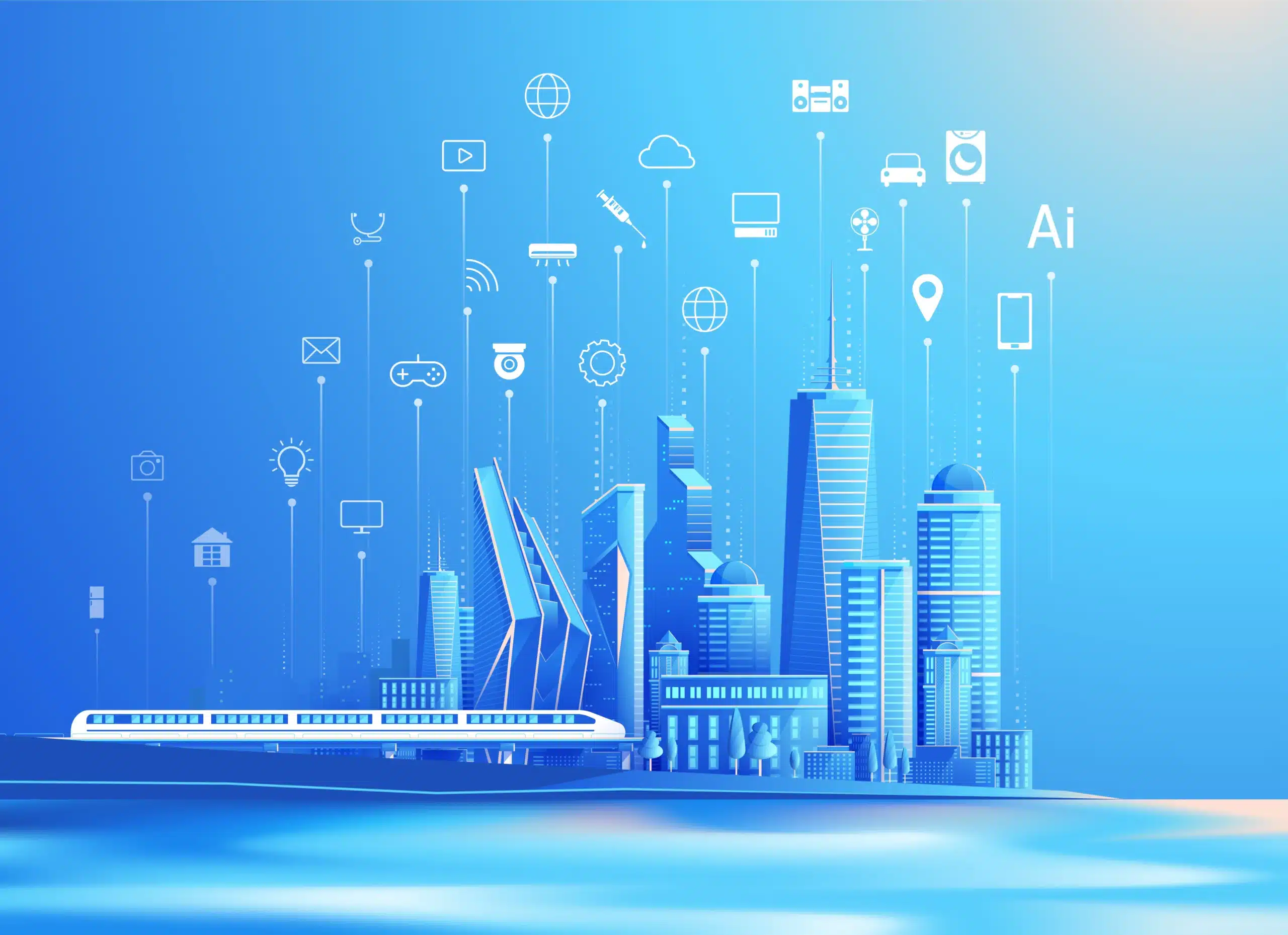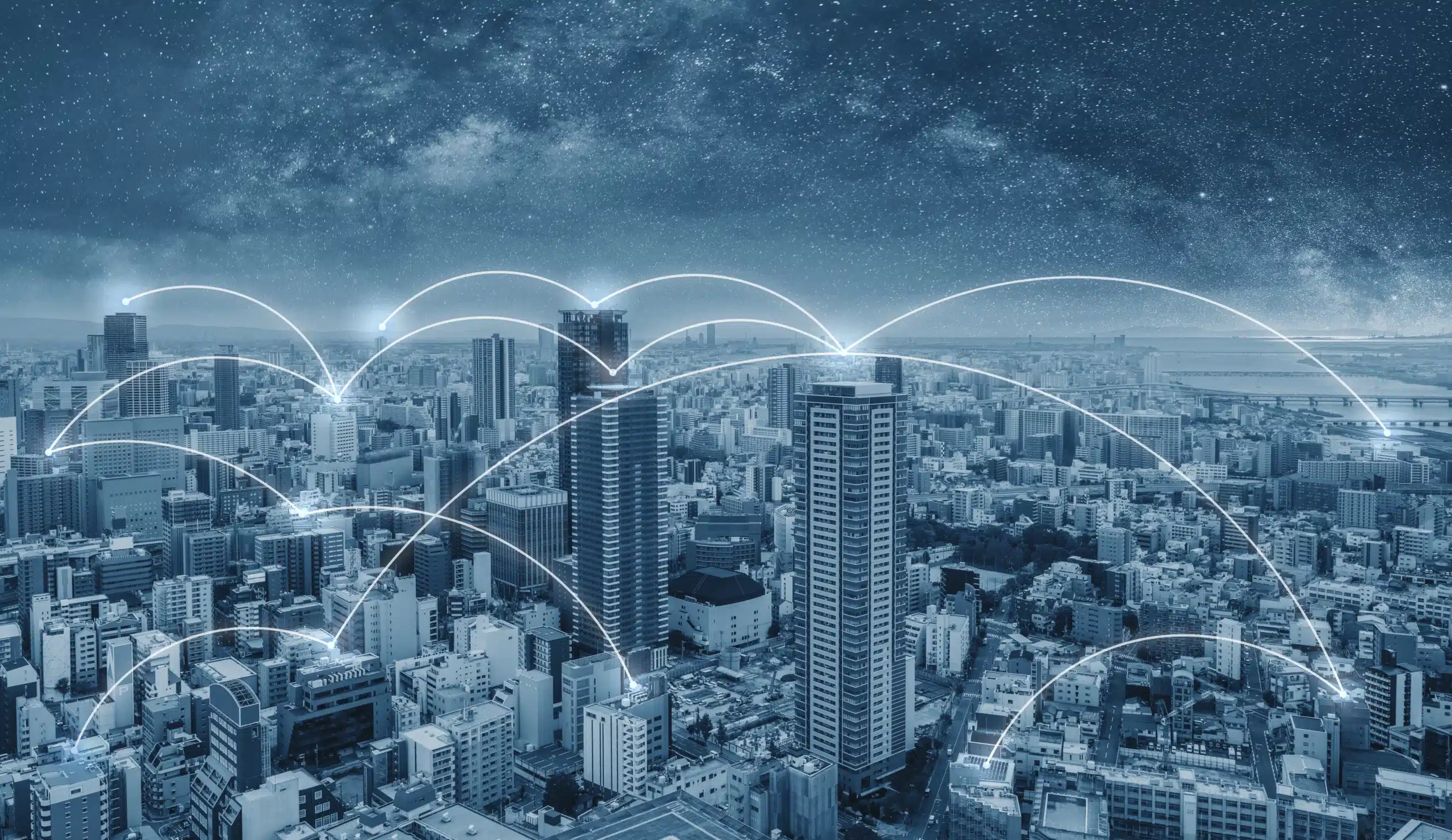This article was written as a collaboration between Tommy Hagenes from Energy Control/Airthings/Proptech Bergen and Carsten Lehbrink from qbee AS.
First published in Norwegian found here
Many can be familiar with a situation where they have too many things going on at the same time, but what if you had 31 billion devices in the cloud? Is it possible to be in control?
By 2020 there will 31 billion devices, or IoT-devices, according to Leftronic.com. Every single second this increases by 127 new devices. By 2025 it is expected that there will be more than 75 billion devices connected to the internet.
Data-driven buildings
It requires the control of the data to be systematic. For commercial property especially, one has to handle the fact that everything in the building is a device. One has to realize that the future that has been talked about is already our present. Already, 90% of cars will be online by next year and 80% of industrial production uses or will use IoT actively within the same timeframe.
A successful IoT project requires that a whole technological and commercial value chain works together. What’s exciting and challenging about bigger IoT projects for buildings is that most buildings are not new constructions. Only 1% of buildings are newly constructed. Therefore, often the project has to deal with multiple suppliers and existing technology that might be expensive to replace. This might be technology that is more than 10 years old, and it is as relevant for smart buildings as for industry 4.0.

The goal is to design flexible technological architecture which makes it possible to connect to existing traditional systems, such as ventilation systems, heating systems, and so on, and be able to connect this to newly developed technology to efficiently capture data from both new and existing devices. You also need a safe and reliable communication to a data base that can collect and organize the data. But that’s not all. With this many data points being collected every minute or second today, you also need smart systems that can visualize and analyze the data. There might be many thousand data points per building, and it will be impossible for a human to monitor this directly. This is normally where a big part of the spending ends up. If the system is designed in the right way, the data analysis can add a lot of value. This can be both through limit values and normal statistical analysis or through the use of machine learning and artificial intelligence.
How to get from insight to control
The next step is to use this insight. If you have the data analytics and the insight that it has provided, this needs to be fed back into the system to change various values and achieve some sort of control. Only when the data analysis can be used to control the system, will you achieve the value that enables the project to achieve a good ROI.
Before any project it’s important to understand a few basic things:
- Where should the control be placed? Should it be in the cloud or locally? Or maybe a hybrid solution? What happens if the connection is down?
- Who will need access to the system? How will the customers use the system and who is responsible for maintenance?
- Machine learning and artificial intelligence have come far and the technology can be used for a lot of things. But still, a lot has to be done using limit values, hysteresis, and normal statistics. The result is often better since more people understand the logic and can ask critical questions. Often advanced machine learning is not necessary for these projects.
- A lot of big IT projects fail because one makes a big monolithic solution. In the IoT world one would normally combine many smaller systems. Especially if there already are some legacy devices. One has to find a good technological solution to control, monitor, and update all the building blocks in a simple, reliable, and cost-effective way.
- Traditionally one has bought control systems for buildings with a one-time cost. This means that one makes an investment and expect the system to work for the next 12 to 20 years. Since modern systems are much more software-based and often run both in the cloud and locally, the supplier might has a payment model with a monthly subscription component. Having operational technology operated properly can be the key to success when dealing with data-driven buildings.
Summary

The future is closer than ever before. We already have an enormous amount of data in buildings, and we can expect the growth to be exponential going forward. The importance of fleet management, where all the devices in the building have to update itself, is something all organizations will have to think about. Just imagine installing a device in a building and a security breach happens or there’s something wrong with the software that has to be fixed. What if these devices are in 1000 buildings? How will you deal with this?
The IoT challenge that must be solved is that to gain control, we must have a fleet management from day one.







